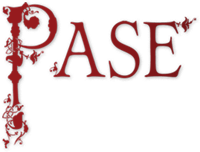Table of Contents
Top of page
Name
Summary
Distribution Map
Property List
Profile
Bibliography
Bottom of page
Huscarl 8
Huscarl of Swaffham (Cambs.), fl. 1066x1086
Male
DWP
4 of 5
Summary
Huscarl 8 held two estates in east Cambridgeshire TRE with a total probable assessment of more than 1½ hides and a value of £1 15s 2¾d; he held one of these as a sokeman and dependent tenant of the abbot of Ely but the other as the king’s man and with power of alienation. He survived the Conquest and was recorded as a juror in 1086, when he may have remained as a subtenant on one or both of his pre-Conquest lands.Distribution map of property and lordships associated with this name in DB
List of property and lordships associated with this name in DB
Holder 1066
| Shire | Phil. ref. | Vill | DB Spelling | Holder 1066 | Lord 1066 | Tenant-in-Chief 1086 | 1086 Subtenant | Fiscal Value | 1066 Value | 1086 Value | Conf. | Show on Map |
|---|---|---|---|---|---|---|---|---|---|---|---|---|
| Cambridgeshire | 14,64 | Swaffham Bulbeck | Huscarl | Huscarl of Swaffham | Edward, king | Alan, count | 1 knight | 0.75 | 0.63 | 1.15 | A | Map |
| Cambridgeshire | 17,2 | Swaffham Bulbeck | - | Huscarl of Swaffham | Wulfric, abbot of Ely | Walter Giffard | Hugh de Bolbec | 0.86 | 1.14 | 1.36 | A | Map |
| Totals | ||||||||||||
Profile
Both of Huscarl 8’s estates were at Swaffham Bulbeck, extending across heath and fen between the Icknield Way and the River Cam in east Cambridgeshire. Although he held them under different lords TRE the fact that the estates were in the same vill, together with his unusual name, renders it beyond reasonable doubt that Huscarl 8 had held both of them before the Conquest. Furthermore, the occurrence of a ‘Huscarl of Swaffham’ among the English jurors of Staine Hundred in 1086 in ICC(11-12) and IE(98) must surely refer to the same man.One of Huscarl 8’s estates comprised 3 virgates that he held as the man of King Edward (Edward 15), to whom he was probably commended and to whom the soke also belonged. However, both DB and ICC(14) note that Huscarl ‘could grant and sell his land’ and show that he did not hold his estate as a dependent tenant of the king. This estate was one of three that together were assessed for 3¼ hides and held by three anonymous ‘knights’ (milites) as subtenants of Count Alam (Alan 1) in 1086; and if the combined TRE value of 55s was divided in proportion to the assessment of the component holdings then Huscarl’s will have been worth about 12s 6¼d. The DB and ICC entries also note that he had to provide cartage, a customary due to transport the soke-lord’s goods when required.
The details of Huscarl’s other estate are harder to unravel. It was one of a varied group of estates that in 1086 together made up a manor of slightly more than 7½ hides held by Hugh de Bolbec (Hugh 30) as the subtenant of Walter Giffard (Walter 3). ICC (12) reveals that Huscarl was one of three sokemen, unnamed in the corresponding DB entry, who between them held 2½ hides and 10 acres of this land TRE; if divided equally between them and if the values of the whole were divided proportionally then Huscarl’s holding would have comprised just under 3½ virgates with a TRE value of £1 2s 8½d. These three sokemen (the other two being Beorhtwine and Ælfsige) were the men of the abbot of Ely and ‘could not depart’ without his permission, which means that they were his dependent tenants; the ICC entry also notes that they had to provide cartage and escort dues for the sheriff.
Although Huscarl 8 is not named in either DB or ICC among the minor subtenants of any estate at Swaffham in 1086, the fact that he was listed among the English jurors of Staine Hundred renders it likely that he was nevertheless still a landholder in the immediate vicinity (cf. Lewis 1993: 26-32). He was identified in the list by the locative byname ‘of Swaffham’, which strongly suggests but does not prove that he was still associated with or resident on one or both of his pre-Conquest estates.
Huscarl 8’s little estates at Swaffham were nearly 30 miles from any other held TRE by someone of that name and, given the relative sizes of the estates concerned, were probably too far distant for a connection between them to be considered despite the relative rarity of the name.
Bibliography
ICC: Inqusitio Comitatus Cantabrigiensis, in Inqusitio Comitatus Cantabrigiensis, nunc primum e manuscripto unico in Bibliotheca Cottoniana asservato typis mandata, subjicitur Inquisitio Eliensis, ed. N. E. S. A. Hamilton (London: John Murray for the Royal Society of Literature, 1876), 1–96
Lewis 1993: C. P. Lewis, ‘The Domesday jurors’, Haskins Society Journal 5 (1993), 17-44
